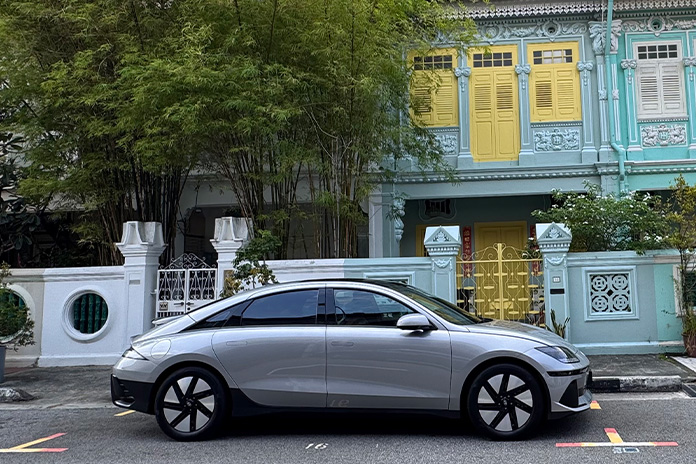
WHEN Dyson pulled the plug on its conceptual electric vehicle business in 2019, that left a bruised gap in Singapore’s future business plan.
But Hyundai was quick to drive its EV initiative and set up its state-of-the-art Hyundai Motor Group Innovation Center Singapore (HMGICS) assembly facility, in 2023.
Located in the relatively off-the-beaten-track location of Bulim, the HMGICS is open to the public to explore the Skytrack on the roof, a nursery and an excellent restaurant, Na Oh.
Benefits Of Local Assembly
Where Dyson blamed the lack of commercial viability for its decision to abort, Hyundai has pushed ahead and has delivered the IONIQ 5 and 6 models for the local market. It will probably make more inroads as the facility matures and starts operating at full capacity.
ALSO READ: Marketing — It’s Not Brave. It’s Sensible
Generally, when you have an assembly plant in a country, you expect cheaper cars. But in Singapore’s complex car market laden with heavy taxes and fixed lifespans for cars, that’s not an option. So, Hyundai has beefed up the local models.
The local models will be equipped with Bluelink, which allows you to control some of the car’s features from your smartphone, and localised navigation with built-in charging point support.
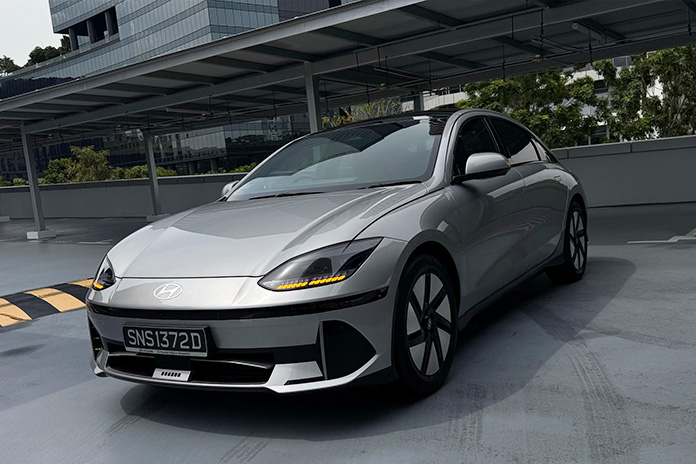
There are also more variants offered locally — four each for the IONIQ 5 and 6. There IONIQ 6 comes with a five-year unlimited mileage warranty and 10 years or 160,000 km warranty on the high-voltage battery unit.
Prices range from *$200,000 up to around *$260,000, depending on where the needle lands with the Certificate of Entitlement (COE) lottery.
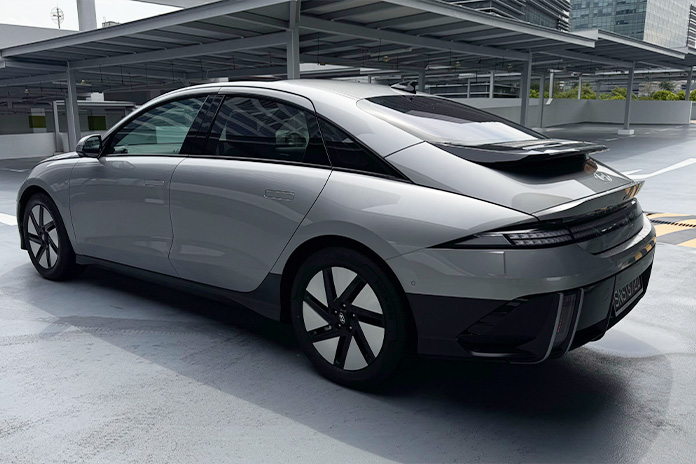
The IONIQ 6 Aspiration
While the IONIQ 5 presents a more expected design proposition for a compact crossover SUV, the IONIQ 6 sedan pushes the bar in a different direction.
As functional as electric cars are becoming, for their silent torquey performance, the Singapore-assembled IONIQ 6 does take you up a slightly different road.
ALSO READ: A Happy Space For A Healthy Brain
While it desires to be an urban wolf, with hints of Porsche design elements in the rear, an elongated Beetle in the belly, and Fairlady in the front, it’s pretty much a sheep at heart.
Cosseted by all the driver aids you would expect in a car designed for today, its prime objective is to keep you on a safe road. It’ll keep you in your lane, assist you when there’s an impact looming, and even shows you what’s near the car when you indicate to make a turn.
More Bang For Your Buck
The Prestige 53kWh variant tested here, generates 107kW of power, squeaking into the hotly-contested COE Category A, only laden with bells and whistles.
The rear-wheel-driven IONIQ 6 pushes along at an unhurried pace, hitting 100kmh in over 9 seconds, before running out of breath at 185kmh. For city driving, it has a range of around 430km, which, in Singapore’s driving conditions might require battery charging every week.
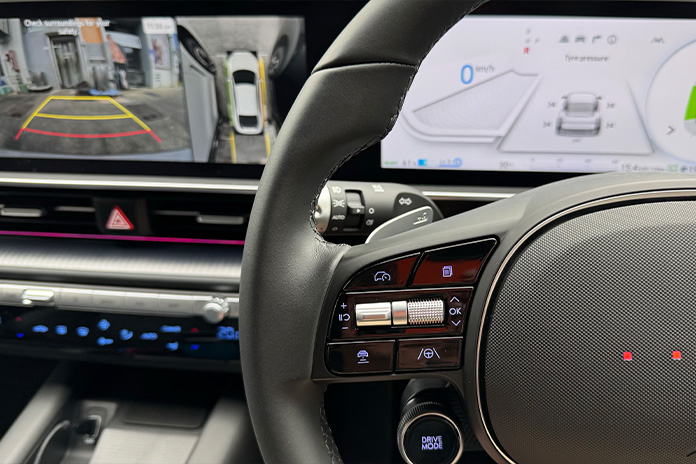
Space To Manoeuvre
There are a few driving modes, which can be switched on the steering wheel. From Normal to Sport, the performance becomes perky, and is aided by the electric Active Sound Design, which Hyundai describes as “a virtual spaceship-like sound that immerses you in the feeling of outer space”. Not having been in a spaceship, or in outer space, I can’t vouch for the authenticity of this statement.
But, you do hear some audible difference instead of that cold disquieting quiet, also often associated with outer space.
When you switch to Eco, everything slows down, which is to be expected.
While not electric quick, it does bring the driving experience to something closer to that of a petrol-driven car. Paddle shifters add to the driving feel, and a sunroof lets in more light.
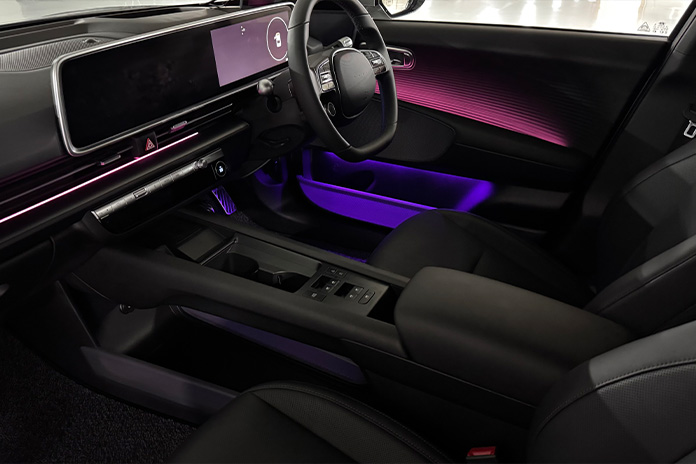
A huge display spans a broad stretch of the dashboard. The 12.3” instrument cluster and a similar sized touchscreen are combined into a single screen. It means you’ve got a baffling display of information, and quite a bit to reach if you need to change anything on the further edge of the display.
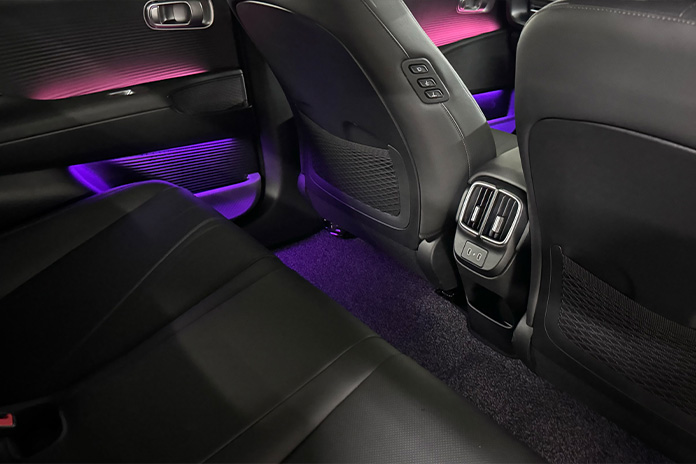
Built on the Electric Global Modular Platform, the IONIQ 6 has a spacious cabin and boot. While many cars are tight at the back, there’s actually quite decent legroom for the passengers in the rear.
A short front — since there’s no engine, just the air-conditioning gear and a small storage space — means there’s ample room in front as well.
The glove compartment is a nifty drawer, which makes sense as you can look for things easily instead of worrying if they are going to tumble out.
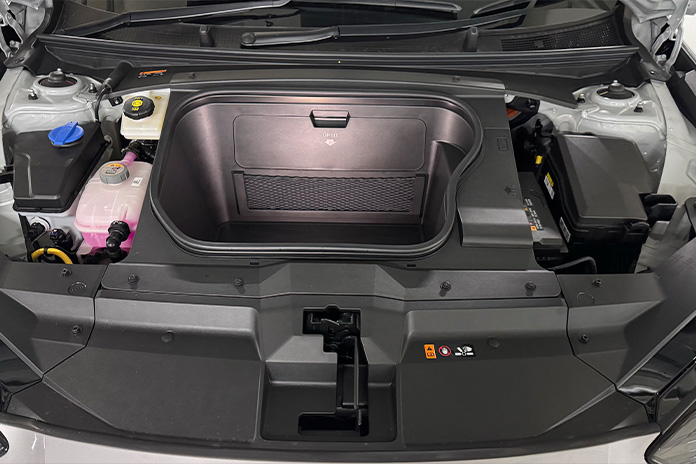
Earth-friendly IONIQ 6
In keeping with the expected EV profile, the IONIQ 6 is laden with environmentally friendly features. The crash pad and headlining are made from fibres extracted from sugarcane. The seat “leather” is processed from flaxseed oil, and the dashboard and door trims are coated with bio paint from rapeseed flowers and corn extract.
The interior comprises a mix of textured surfaces. Stripes, dots, pixels, patterns, rough and smooth, but somehow they all come together well.
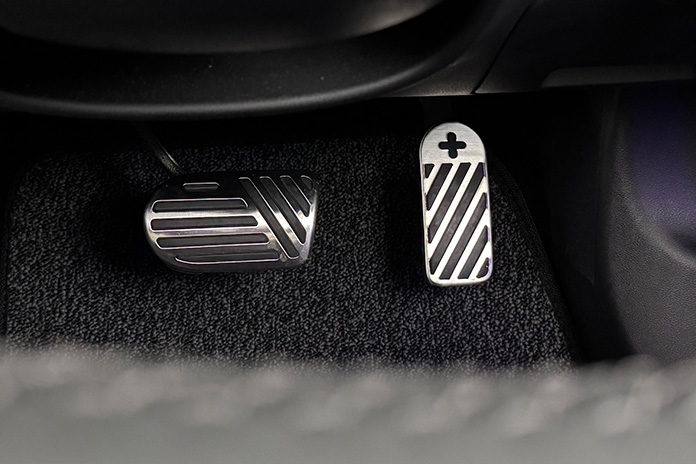
It’s not without some teething issues. The test drive unit developed a mysterious rumble that faded away when the air-conditioner was switched off. But it wasn’t heard again.
The IONIQ 6 is one of those cars that will divide opinions. But, love it or loath it, it’s a positive move for what EVs can do to make the cars of tomorrow more engaging and enjoyable.
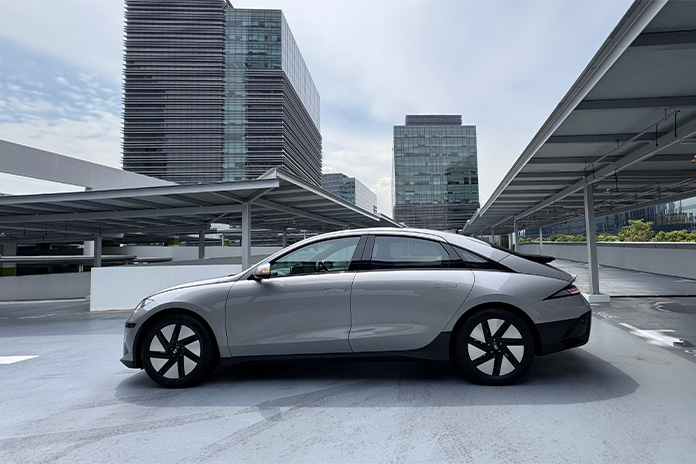
HYUNDAI IONIQ 6 RATING
Styling: 8/10
Interior: 6/10
Connectivity: 6/10
Ride: 7/10
Handling: 7/10
Power: 6/10
Overall: 7/10
*Please reconfirm price with dealer.
Read more STORM-ASIA car reviews HERE.





















